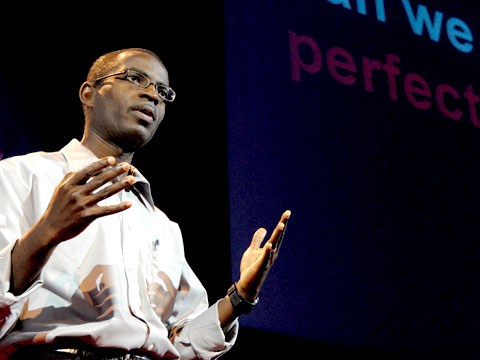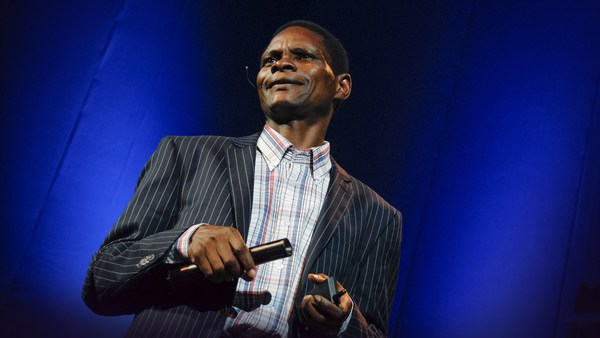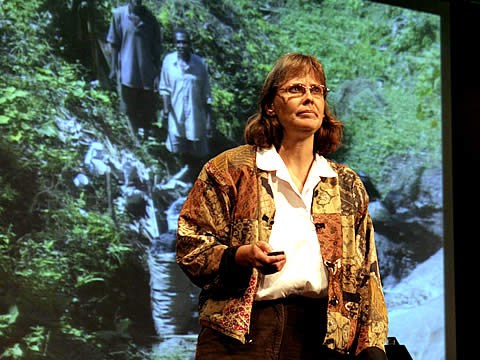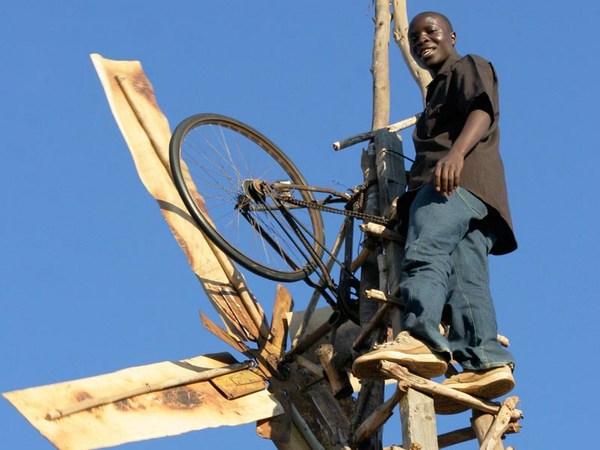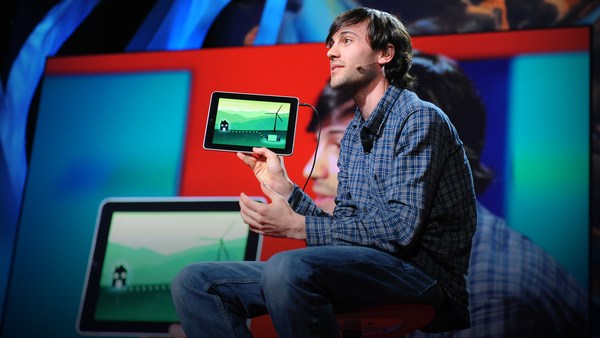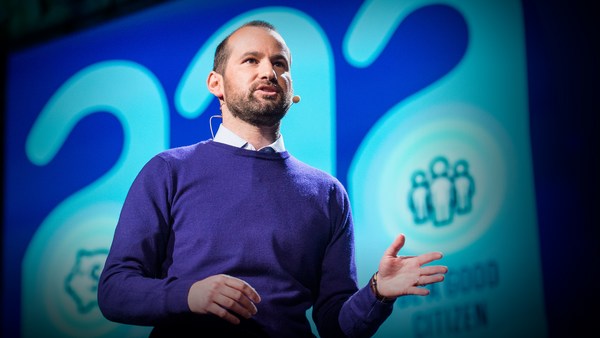Chris Anderson: William, hi. Good to see you.
William Kamkwamba: Thanks.
CA: So, we've got a picture, I think? Where is this?
WK: This is my home. This is where I live.
CA: Where? What country?
WK: In Malawi, Kasungu. In Kasungu. Yeah, Mala.
CA: OK. Now, you're 19 now?
WK: Yeah. I'm 19 years now.
CA: Five years ago you had an idea. What was that?
WK: I wanted to make a windmill.
CA: A windmill?
WK: Yeah.
CA: What, to power -- for lighting and stuff?
WK: Yeah.
CA: So what did you do? How did you realize that?
WK: After I dropped out of school, I went to library, and I read a book that would -- "Using Energy," and I get information about doing the mill. And I tried, and I made it.
(Applause)
CA: So you copied -- you exactly copied the design in the book.
WK: Ah, no. I just --
CA: What happened?
WK: In fact, a design of the windmill that was in the book, it has got four -- ah -- three blades, and mine has got four blades.
CA: The book had three, yours had four.
WK: Yeah.
CA: And you made it out of what?
WK: I made four blades, just because I want to increase power.
CA: OK.
WK: Yeah.
CA: You tested three, and found that four worked better?
WK: Yeah. I test.
CA: And what did you make the windmill out of? What materials did you use?
WK: I use a bicycle frame, and a pulley, and plastic pipe, what then pulls --
CA: Do we have a picture of that? Can we have the next slide?
WK: Yeah. The windmill.
CA: And so, and that windmill, what -- it worked?
WK: When the wind blows, it rotates and generates.
CA: How much electricity?
WK: 12 watts.
CA: And so, that lit a light for the house? How many lights?
WK: Four bulbs and two radios.
CA: Wow.
WK: Yeah.
(Applause) CA: Next slide -- so who's that?
WK: This is my parents, holding the radio.
CA: So what did they make of -- that you were 14, 15 at the time -- what did they make of this? They were impressed?
WK: Yeah.
CA: And so what's your -- what are you going to do with this?
WK: Um --
CA: What do you -- I mean -- do you want to build another one?
WK: Yeah, I want to build another one -- to pump water and irrigation for crops.
CA: So this one would have to be bigger?
WK: Yeah.
CA: How big?
WK: I think it will produce more than 20 the watts.
CA: So that would produce irrigation for the entire village?
WK: Yeah.
CA: Wow. And so you're talking to people here at TED to get people who might be able to help in some way to realize this dream?
WK: Yeah, if they can help me with materials, yeah.
CA: And as you think of your life going forward, you're 19 now, do you picture continuing with this dream of working in energy?
WK: Yeah. I'm still thinking to work on energy.
CA: Wow. William, it's a real honor to have you at the TED conference. Thank you so much for coming.
WK: Thank you.
(Applause)
